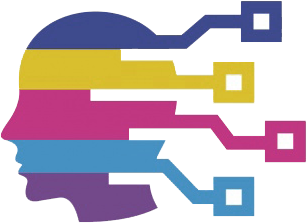The rapid advancement of artificial intelligence (AI) is transforming various industries, sparking fervent discussions about its capabilities—including in the realm of coding. Many novice developers like myself often process coding as a daunting labyrinth, which makes the integration of tools like Twine and Ink seem less intimidating. However, when major technology leaders advocate for reliance on AI-generated code for critical business applications, concerns about the implications arise. While Microsoft CEO Satya Nadella revels in the AI revolution, the narrative warrants a closer examination of whether we are celebrating a technological leap or stepping into treacherous territory.
Microsoft’s Bold AI Adoption
At a recent conversation with Meta’s Mark Zuckerberg, Nadella boldly stated that a staggering 20 to 30 percent of the code in their repositories is now AI-generated. This figure, while intriguing, raises questions. Does it encompass only the dazzling new snippets crafted from scratch, or does it include the more benign autocomplete features of modern coding environments? The semantics surrounding this percentage can shape our perceptions of AI’s efficacy. Nadella’s enthusiasm, especially regarding AI’s prowess with Python code, contrasts sharply with the struggles still faced in languages like C++. The disparity reveals a layered reality where not all coding languages benefit equally from AI, further emphasizing the potential risks entwined with relying on code that hasn’t been thoroughly vetted.
The Risks of AI-Coded Solutions
While it’s enticing to think about the efficiencies that AI can offer, my unease grows when considering the potential threats to security and quality. Notably, both Nadella and Zuckerberg expressed a vision where AI will soon play an even larger role in the code development landscape. However, underlying this optimism is a troubling reality: AI systems notoriously struggle with “hallucinations.” This occurs when AI inaccurately predicts or fabricates dependencies and third-party libraries, potentially injecting vulnerabilities into systems without proper oversight.
Zuckerberg’s confidence that AI-generated code will enhance security feels premature, especially considering the inherent risks associated with unpredictability. AI can concoct fictional packages that could be a vehicle for malicious actors to compromise code integrity. Such oversights could usher in a new era of cybersecurity threats, one where codes are not only generated based on historical data but also populated with perilous pitfalls.
Industry-wide AI Dependency
The aspiration to ramp up reliance on AI isn’t confined solely to Microsoft. Sundar Pichai’s comments regarding Google’s ongoing use of AI in 30 percent of their coding processes reflect a larger industry trend. Moreover, Microsoft CTO Kevin Scott’s forecast for 95 percent AI-generated code within the company by 2030 demonstrates a resounding mandate for digital innovation through AI, yet could that reckless enthusiasm overshadow thoughtful caution?
The landscape of technology is undoubtedly shifting rapidly towards automation and AI integration. However, questions must linger about the quality assurance measures being employed by these tech giants. How can we trust that these multi-billion-dollar companies are taking appropriate actions to validate their AI-generated code? If the drive toward efficiency supersedes essential security practices, tension between growth and caution may lead us down a perilous path.
While the allure of a future dominated by AI-generated code stirs excitement and promises efficiency, I remain wary of the consequences. Can we genuinely pave a path toward innovation while simultaneously safeguarding quality and security? The answer may lie in rigorous oversight and a renewed emphasis on the human element in coding rather than just surrendering to AI’s whims. The future could hold a thrilling balance of man and machine where humanity still retains the helm. Until that equilibrium is demonstrated, my skepticism will remain intact, hopeful that our technology leaders remain vigilant in navigating this uncharted territory.

